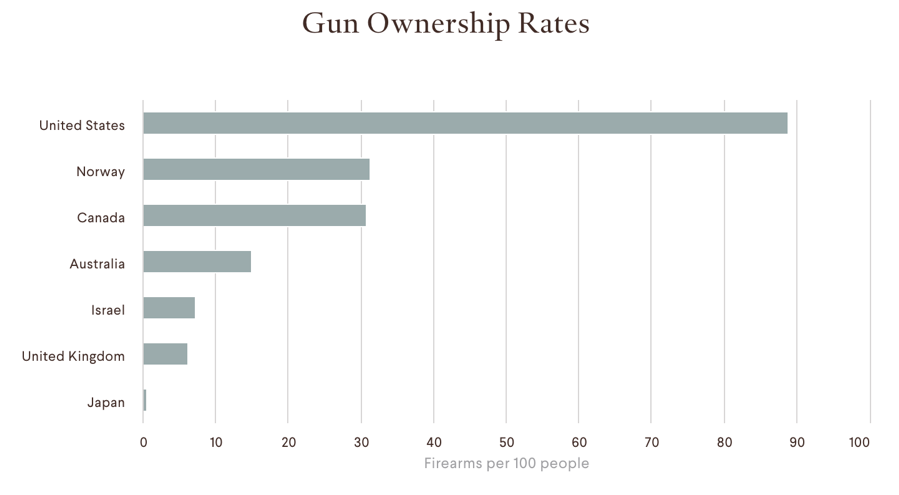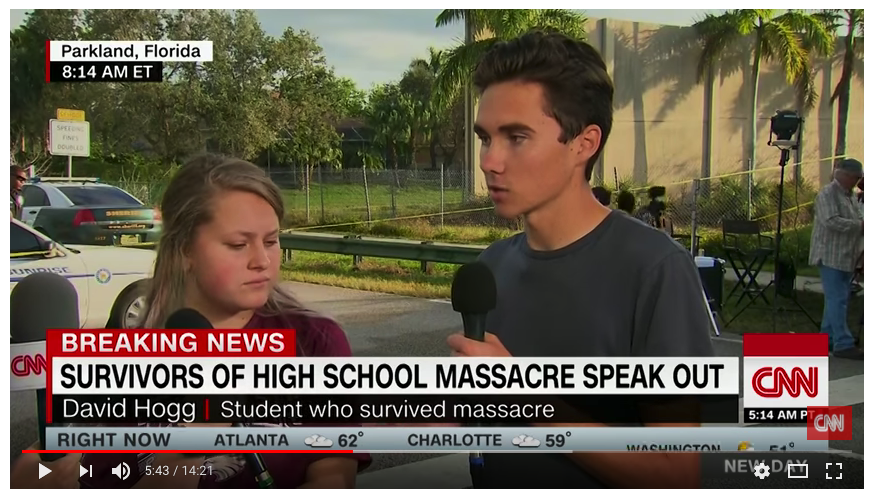Enough with the same responses we get every single time there is a shooting and our children die.
On December 14, 2012, 22 beautiful first-grade children were slaughtered in Newtown, CT, at Sandy Hook Elementary School, in their classrooms. Six adults were also killed. In the afterschock, we all said never again. Since then, there have been nearly 300 school shootings.
The latest happened two days ago, on Valentine’s Day at a high school in Broward County, Florida, and at least 17 students and adults are dead, with more injured. It is the seventeenth school shooting this year. It is February.
There have been horrendous school shootings before this in Colorado, California, Pennsylvania, Virginia, Texas, Michigan, Minnesota, Oregon. Those are only a few that are considered among the “worst.” There are hundreds more we don’t hear about. I think parents will tell you that even one child being threatened by a gun at school is unthinkable, unacceptable, and traumatizing. Killed?
The Gun Violence Archive finds that there have been 1,607 mass killings since Sandy Hook. That is more than one a day.
I’m not going to say, “When will political leaders in Congress have the courage to do something?” or “When will people stop saying their thoughts and prayers are with gun victims and then not do anything?” or any of what basically amount to echo chamber (albeit sincere) statements.
I’m not going to say, “When will enough be enough?”
Let’s be honest, finally. It seems nothing is enough.
It doesn’t work. It has never worked. Yesterday, Education Secretary Betsy DeVos called for more hearings on guns and mental health. Check. Experts are all over TV telling parents what signs to look for in their teenagers that might indicate a tendency toward violence. Check. The Speaker of the House of Representatives, Paul Ryan, said yesterday:
“This is one of those moments where we just need to step back and count our blessings,” he told reporters Thursday at a news conference at the Capitol. “We need to think less about taking sides and fighting each other politically, and just pulling together. This House, and the whole country, stands with the Parkland community.”
Check. None of these things work, but they happen like clockwork with every shooting that ends up on TV (which are only a few). And while this may seem like a side point it’s not — there is no question in my mind that Paul Ryan loves his children. Somehow he, and so many other leaders, are able to separate that from the horror in front of our eyes on TV. Not to be partisan, I watched Rep. Debbie Wasserman Schultz speak, describing how Marjorie Stoneman Douglas High School is a neighboring school to her daughter’s high school in Broward County. Her love and concern for her daughter were palpable as she spoke about needing to come together and do something.
These are good people in positions of power. I think they must be, or at least some of them, as frustrated and horrified as the rest of us. Surely, they want this to stop.
But it doesn’t stop. And yes, our children are more stressed than ever, and the internet is everywhere and shows unspeakable violence that affects people’s minds, especially those who may be predisposed to mental illness or otherwise have some instability. Watching your teenagers for signs of withdrawal or tendencies toward violence is a necessity for all parents, but it won’t fix the gun problem. Mental health is a huge factor, but not the root cause.
Is it true, what some commentators say, that until one is touched personally by violence, we just don’t feel it? We soon go back to our everyday lives. I think it’s part of it.
But very few people mention a root cause of all this. That is, to state the more than obvious – guns, but in conjunction – the influence and impact of hundreds of millions of dollars upon our political system and some of our elected officials from the National Rifle Association (NRA). The NRA represents less than one-fifth of all gun owners and it claims to speak for the people of this country. It’s reach is far and wide because of the money it yields.
Sandy Hook captured the nation in a way that other shootings have not, because the victims were six- and seven-year-olds. Babies in their classrooms doing schoolwork. It’s unthinkable.
Here is a listing of all the actions taken following the Sandy Hook Elementary School shooting. Among them, President Obama issued 23 Executive Orders and 12 legislative proposals, including funding for mental health. The NRA opposed every single one.
Connecticut’s Governor Dan Malloy and the CT General Assembly worked together nearly seamlessly after Sandy Hook and four months later, passed the the second toughest gun laws in the country (behind California). Collaborative iniaitives that began then to address mental health and the role of schools, parents, community leaders continue to this day.
Still, it’s not enough.
The United States is infected by guns. It is a sickness that cannot be eradicated by one state in the face of horrendous tragedy, or by addressing secondary symptoms of a cultural illness. It can only be addressed, fully, at its source. That is guns and the NRA.
If pictures are worth a thousand words, here are two thousand describing our country as compared to other industrialized nations.
From the Council on Foreign Relations:


As stated by Javier Zarracina in Vox, “Looking at the entire world, countries in Central America like Honduras, El Salvador, or Mexico have the most gun homicides per capita. But among the developed countries, none gets even close to the US.”
In one country – Australia – Prime Minister John Howard decided it was time for change following the 1996 Port Arthur massacre in Tasmania in which 35 people were killed by a man using semi-automatic weapons. Howard wore a bullet-proof vest when he announced the gun restrictions in 1996. The government succeeded in passing several tough laws, including the banning of several types of weapons, and a government buyback program. There was not another mass killing for 20 years. Australia does not, however, have a domestic gun lobby similar to the NRA.
Daniel Webster, a researcher specializing in gun violence at Johns Hopkins University’s Bloomberg School of Public Health, wrote that it would be challenging to do this in the United States, but that the “experience in Australia over the past 2 decades since enactment of the NFA National Firearms Agreement provides a useful example of how a nation can come together to forge life-saving policies despite political and cultural divides.”
An article by Nicholas Kristof last year very effectively describes, with words and pictures, the United States as an outlier on gun laws and gun ownership; and how restricting guns will stop gun killings.
So what will be enough here in the United States?
If we want hearings, how about hearings on the NRA’s influence on gun legislation and where are that funding is coming from and going? There is now an allegation that the NRA has accepted funding from Russia, which would be illegal. We don’t know if that’s true, but we must find out.
How about exposing the absurdity, once and for all, that the National Rifle Association speaks for the majority of people in this country? It does not.
How about banning once-banned assault weapons? The federal Assault Weapons Ban expired in 2004. Experts, research, data, and even polls show that they are linked to all mass killings and the actual U.S. public (not the public claimed by the NRA) doesn’t want them.
When you look at history, some of the most effective actions have been led by the people–often parents. Look at the impact on drunk driving once Mothers Against Drunk Driving (MADD) launched. There are several groups for sanity on guns that have mobilized effectively – Moms Demand Action for Gun Sense in America and Everytown for Gun Safety, a group specifically devoted to defeating public officials beholden to the NRA.
If we have truly had enough, isn’t it time to come to Washington and demand action? Shut things down. There is support here. The Senate was shut down when Senator Chris Murphy launched a gun control filibuster in 2016, following the shooting at a nightclub in Orlando. While Senator Murphy represents Connecticut, a state supportive of gun restrictions, other Senators took fairly tough actions politically, including Senators Joe Manchin, Mark Warner, Tim Kaine, and Bob Casey.
We have to face the fact that none of this has been enough. But it could be. Something will tip this, something has to. Could it be now?
Maybe this time will be enough because, this time, we are hearing from the teens themselves, children still. I so hope they will continue to be the very clear, direct, and rational voices to adults that we truly and desperately need.
One survivor of the horrific massacre is 17-year-old David Hogg. When asked if he had a message for lawmakers, Congress or the president, he responded, “My message to lawmakers in Congress is, Please, take action. Ideas are great. Ideas are wonderful…But what’s more important is actual action, and pertinent action, that results in saving thousands of children’s lives. Please, take action.”
